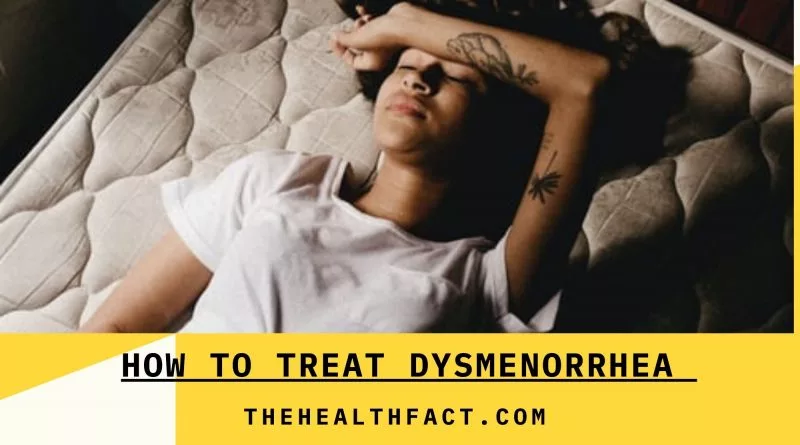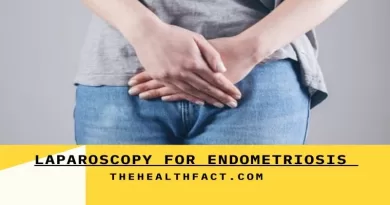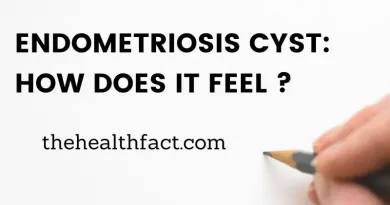How To Treat Dysmenorrhea: Get Rid of Painful Periods
Table of Contents
Overview
Dysmenorrhea affects a large number of adolescent girls across the globe and is often suppressed by self-medication, unfortunately. Dysmenorrhea can occur in two stages primary and secondary. Furthermore, there is a whole study on this and we will talk about it too. So, is self-medication wrong during periods? If so then how to treat dysmenorrhea?
The unbearable pain is not normal, we need to understand it. A mild to moderate pain is natural and every girl experiences cramps before and during her periods. The inner lining of the uterus which is called endometrium releases a chemical called prostaglandins which contributes to smooth muscle contraction and cramps.
As we have discussed two types of dysmenorrhea, let’s know briefly.
Primary dysmenorrhea: this is a common phenomenon that happens with almost every girl. It includes the common mild to moderate pain women experience every month. The menstrual pain starts one or two days before the bleeding occurs.
Common symptoms of primary dysmenorrhea are painful sensations in the lower abdomen along with other symptoms such as fatigue, dizziness, fever, pain in other parts like the legs or back, headache, and nausea or vomiting. The affected smooth muscles can sometimes cause diarrhea too.
Primary dysmenorrhea isn’t specific and the pain comes and goes and often stops after a certain age or after pregnancy. So, in short, this condition of painful periods is normal and not a disease.
Secondary dysmenorrhea: if you have a disease or infection in the reproductive duct, then painful periods will fall into secondary dysmenorrhea. Pain starts early in the menstrual cycle and stays longer than normal menstrual cramps. This condition may not be accompanied by nausea, vomiting, and diarrhea.
Do you want to know what are the conditions that are causing you dysmenorrhea every time you bleed? Here is the answer.
Secondary Dysmenorrhea Causes
Menstrual cramps in secondary dysmenorrhea happen as a consequence of issues in the reproductive issues such as:-
Endometriosis:- endometrium is the inner lining of the uterus which breaks and bleeds every month. But in endometriosis, this lining is found outside the uterus. And because this bleeds outside of your uterus, resulting in swelling and scarring, you feel extreme pain during menses.
Adenomyosis:- in this condition, the uterus gets bigger as it should be due to the endometrial growth within the uterus muscles. Eventually leading you to have unbearable periods.
Pelvic inflammatory disease:- it’s an infection caused by bacteria in the uterus and spreads to other reproductive parts. Due to this one can feel stomach aches and pain during sex.
Fibroids:-fibroids are non-cancerous growth that grows usually inside or outside of the uterus. These fibroids can be multiple and vary in size. In some cases, the fibroids can expand the uterus drastically so that it reaches the ribcage leading to weight gain. Usually, fibroids don’t have specific symptoms and are detected by a pelvic exam.
Cervical stenosis:- is the condition of the narrowing of the cervical passage of the uterus.
How To Spot Dysmenorrhea?
Dysmenorrhea is considered more as primary than secondary dysmenorrhea in adult society. Typically it is diagnosed by the history of the participant, pelvic examinations, absence of other factors for menstrual pain, body mass index less than 20, longer menstrual cycles, heavy flow and irregular periods, having someone with dysmenorrhea in the family, or any history of sexual assault.
Well, the effects of moderate to severe primary dysmenorrhea generally decrease with the aging of the women. And after childbirth, it’s even more reduced and women get free of an unbearable period of pain. Improvements may not be seen in pregnancies that ended up with abortions or miscarriages.
No specific test is needed for its diagnosis. But a physical examination that results in a normal-sized, nontender uterus and the absent mucopurulent discharge, adnexal mass, or uterosacral nodularity is consistent with primary dysmenorrhea.
Let me show you some classic symptoms of primary dysmenorrhea:-
- Pain begins a few months or 2 days before the menstrual cycle.
- Pain right before or during the periods.
- Pain in the lower abdomen can spread to the back, inner thighs, and both.
- Menstrual pain stays more than 72 hours.
- Pain is episodic.
- Some other symptoms can be experienced such as vomiting, nausea, headache, and exhaustion.
However, the pelvic examination is not necessary for the treatment in adults with a classic history of dysmenorrhea. A pelvic examination includes the insertion of gloved (lubricated) hands in the vagina with one hand over the lower abdomen. It is to detect the exact position, shape, size, of the ovaries and uterus. Moreover, the other parts like the cervix, rectum and fallopian tubes are checked in the procedure.
Also read:- home treatment for periods pain
However, a pelvic examination, radiological testing that includes abdominal or transvaginal ultrasound must be performed for those whose symptoms do not counter with the empiric therapy( a therapy based on experience or without the perfect information of the condition).
Sometimes the use of tampons may cause dysmenorrhea and can bring out similar symptoms as we have discussed earlier.
Let’s move to the point that is the treatment of primary dysmenorrhea.
How To Treat Dysmenorrhea
Medications include simple medications for pain relief such as NSAIDs( non-steroidal anti-inflammatory drugs) or hormonal conceptions. There are no reports who claim which medications provide higher efficacy. مواقع رهان
Some primary analgesics like aspirin, ibuprofen, and acetaminophen effectively inhibit prostaglandin secretion and provide instant relief from the pain. Most adolescents self-medicate themselves with these medicines. However, some medications may not be good for dysmenorrhea and are contraindicated for use in adolescents and children like aspirin.
People with mild to moderate dysmenorrhea are advised to take these NSAIDS just before the beginning of menses and to continue for 2-3 days throughout the cycle. Overdose should be avoided, as it can cause gastrointestinal disturbance and drowsiness.
Hormonal contraceptives:- pain relievers are best during the burst out of cramps undoubtedly. Still, 20-25% of people will fail the therapy. Thus when NSAIDS fail or contraception is needed, hormonal contraception is a good method to treat primary dysmenorrhea. So, how do hormonal contraceptives work? They usually treat dysmenorrhea by regression of the endometrium lining and shortening the time of proliferation of endometrium and limiting the endometrial secretory activities.
The most commonly used contraceptive option for this is a combined oral contraceptive pill. Moreover, some other methods are also used in practice due to similar efficacy such as contraceptive patch, medroxyprogesterone injection, contraceptive ring, and levonorgestrel-releasing intrauterine system.
Vitamin and mineral supplements:- vitamins like vitamin E, vitamin B1, B6, and omega-3 fatty acids can help in cutting pain. Magnesium may or may not help in this, as it can adversely affect by interacting with medications. Consult your doctor before taking it.
Heat therapy:- applying a heating pad over your lower abdomen from where the pain is coming will relax your pain. As well as it’s a natural method and won’t have any side effects.
Exercise:- do simple exercise for at least 30 minutes, it will boost your mood by releasing endorphins. Practice yoga, walking, or any light workout for yourself.
Also read: exercise on periods good or bad?
Avoid caffeine:- during the time of menses, try to avoid caffeine as much as possible, because it will constrict your blood vessels and worsen your pain. Instead try some alternative drinks like green tea, peppermint tea, or chamomile tea.
Take enough rest:- sleep well and give yourself more rest than you usually take. It’s necessary to let go of exhaustion.
I hope you know what to do during menstrual cramps, now let’s talk about how you would know if you need a doctor or gynecologist. Here are some triggers that would tell you the signs.
When To Go To A Doctor?
The first thing to go for a doctor is that the home remedies aren’t causing any improvement. And the other ones are:-
- Your menses are heavy and the pain is getting even worse
- You feel pain when your periods haven’t come yet.
- Pain is not relieved even after the medication.
- Menstrual pain is spreading to other parts such as the legs and back.
- You get a fever along with cramps.
- You are experiencing severe cramps for the first time.
Where should you go about this problem? Don’t go to a physician instead go for a specialized gynecologist. شركة بوين As they are highly experts in their field of reproductive health. Therefore, prefer to go to a gyno if you feel severe discomfort. Ask them how to treat painful periods or how to treat dysmenorrhea and they will respond to you by prescribing medicine or any further investigation.
Don’t wait for your symptoms to get worse rather go for the treatment soon. Especially when it’s interfering with your regular life.
Conclusion
Dysmenorrhea is not a thing to avoid. Menses are normal, severe pain is not. So if you feel severe pain or more than a female usually experiences during her menses it’s important to go for professional advice. Try some home remedies for relieving the pain if the pain isn’t that severe to go for medical help. Otherwise, check if you have any reproductive disorder which is causing these harsh menses.
Frequently Asked Questions:-
What is the best medicine for dysmenorrhea?
NSAIDs are helpful to relieve pain during periods. You can get them either through prescription or over-the-counter. Some OTC drugs are Advil, acetaminophen, naproxen, ibuprofen. Start your dose one day before your menses come and continue for 2-3 days. Taking medicine before cramps will not cause you severe cramps. If you don’t feel safe, take a doctor’s advice.
How can I get rid of dysmenorrhea naturally?
Hot compression is the best possible way through which you can get rid of dysmenorrhea naturally. Use a hot water bottle, a heating pad, or a warm towel or bath. Do you know a study from 2012 suggests that the application of a heating pad at 104 degrees Fahrenheit works equally as ibuprofen? Apply two to three times a day and you will feel less pain.
What is the main cause of dysmenorrhea?
Well, primary dysmenorrhea commonly happens due to the abnormal contractions of the uterus caused by the prostaglandins. Chemical prostaglandins in more amounts than they should cause severe muscle contractions leading to unbearable pain.
comparatively, secondary dysmenorrhea is caused by different conditions like endometriosis, adenomyosis, uterine fibroids, etc.
Is it normal to have dysmenorrhea every period? لعبت البوكر
Yes, it is normal to have dysmenorrhea every period. It’s due to the breaking of the inner lining of the endometrium. Though, more severe pain or unbearable period of pain is not normal. You should take a check-up if your periods are harsh on you.
Can primary dysmenorrhea be treated?
Yes, primary dysmenorrhea can be treated by few medications like simple analgesics such as ibuprofen, naproxen, and all classes of NSAIDs. Also, oral combined contraceptive pills and hot compression. Regular exercise is also effective in relieving pain.
Can I drink milk during my period?
Dairy is the product to have along with your diet. But having a dairy during your periods might not be a good choice for you. They can worsen your pain symptoms leading to bloating, gas, diarrhea. So, it’s better to avoid any dairy product during menses, either limit the quantity you are taking.
Is chocolate good for dysmenorrhea?
When it’s quite common to have a craving for chocolates during periods, dark chocolate is amazingly helpful in dealing with period cramps. Being rich in magnesium, relaxes your muscles and reduces the pain.
What should we not do in periods?
There are no specific restrictions on what not to do while on periods. But yes, being careful is everything. Limit these few things while having period cramps. Minimize the quantity of caffeine you take. Don’t consume, as they can exacerbate your pain and tender your breasts.
How do you know if you have dysmenorrhea?
Cramps in your lower abdomen before 1-3 days of your menses and intense pain which peaks 24 hours after your periods begin and calm down in 2-3 days. Furthermore, the pain spreads to other body parts like the thighs and lower back.
Does dysmenorrhea feel like labor?
The intense pain of dysmenorrhea can sometimes feel like labor pain as said by some women. Pain starts with menstrual cramps and then gets worse. Muscle contractions can sometimes feel like gas. Every woman feels it differently.



